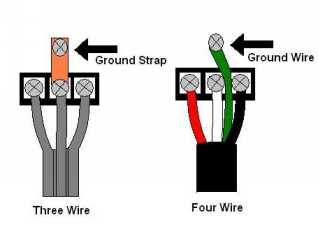I have recently moved into a new home and discovered that my dryer plug does not fit into the outlet. I have a three pronged plug and need a four prong plug. how do i wire the new cord into my dryer?
-
A quick "search Q & A" of "dryer cord" will yield the answer you are looking for.– bigbull15Commented Aug 29, 2016 at 4:22
-
1Check the manufacturer's documentation, it will tell you how to wire your specific dryer. This answer might be helpful.– Tester101Commented Aug 29, 2016 at 11:33
-
What country are you located in, and what's the Voltage&Amperage requirement for your dryer?– Carl WitthoftCommented Aug 29, 2016 at 13:33
-
@CarlWitthoft That's a fair question. I'd say it's a pretty safe bet that wherever the OP is, whether on 50Hz or 60Hz power, whether 220V or 230V, they're using split-phase power with a neutral, two hots and (hopefully) a grounding wire. EXCEPT that there certainly ARE 120V dryers on the U.S. market (for example).– Craig TullisCommented Aug 29, 2016 at 18:04
-
Which is another reason why it's a pretty good idea to find the owner's manual and see what it says about your particular dryer.– Craig TullisCommented Aug 29, 2016 at 18:06
1 Answer
Try to find the owner's manual for your dryer and follow the instructions in the manual.
The terminal block on the back of your dryer should have connections for the neutral and both hot conductors from the dryer cord, plus a separate grounding lug for the grounding wire. The grounding lug is bonding the metal housing of your dryer to the ground. Make sure you leave any green grounding wires on the dryer itself connected, as well.
What you do NOT want to do is connect the ground wire to the neutral lug on the terminal block if there is a separate grounding lug.
Although; depending on your dryer (or if you have an older dryer), there may be a grounding strap connecting the neutral lug to the metal housing of the dryer. If this is the case, you can presume that the dryer was designed to use the neutral as a ground path and connect both the neutral and grounding wires to the neutral/grounding lug. But you still might want to call an electrician and get some local professional advice or have them do the work, especially if it's an old dryer.
The neutral (grounded) and grounding conductors are bonded electrically at the main service panel, but pains are typically taken to keep them separate everywhere downstream from the main panel in order to avoid energizing things you don't want to get shocked by, like the housings of appliances, water pipes and so on.
Make your connections tight. Loose connections get hot and start fires.


